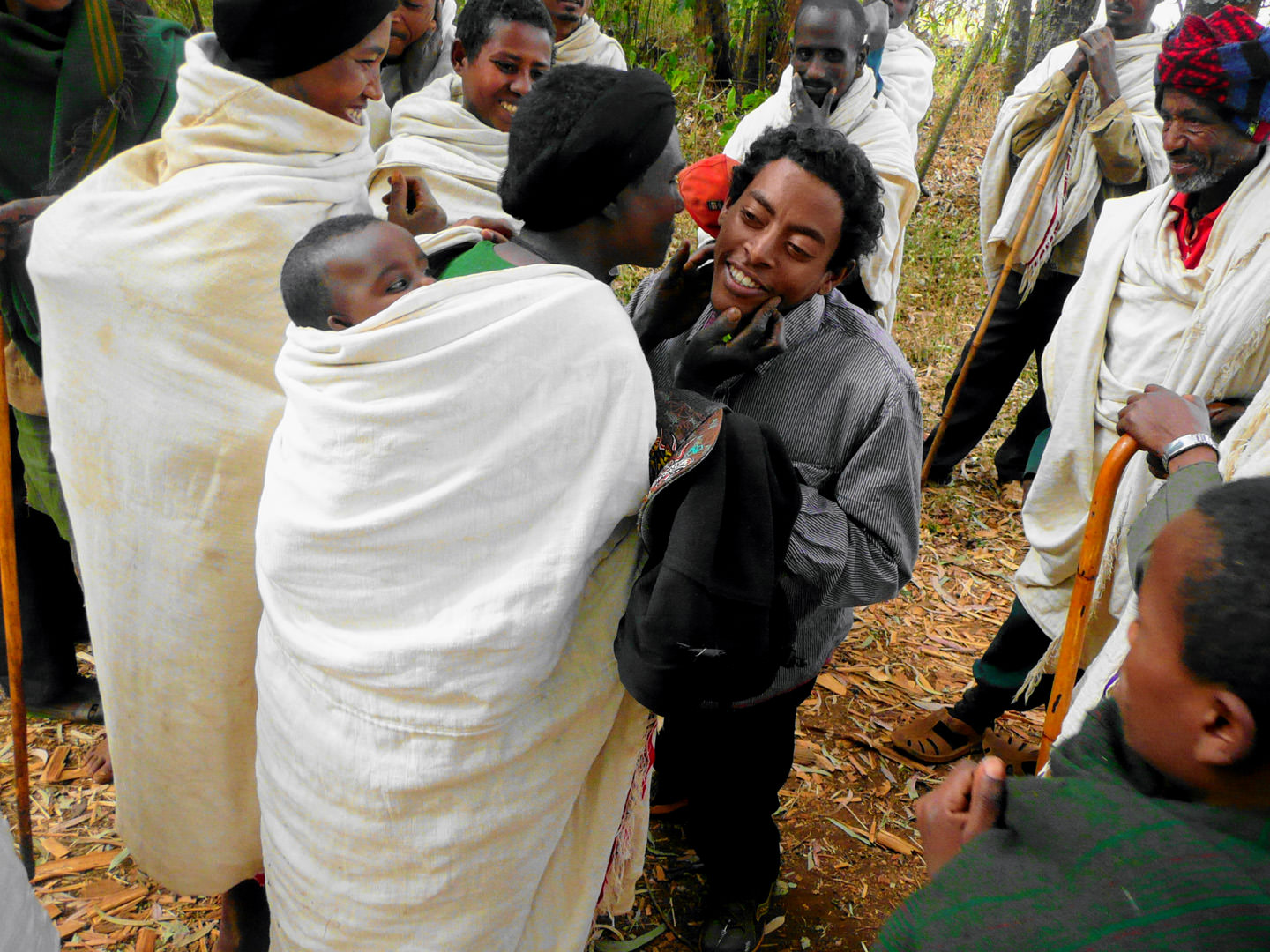Tesfaye Anagaw was a teenager in Ethiopia living with a spinal deformity so severe, his back was permanently bent over “like a dinosaur’s.”
Now an accounting graduate married with an 18-month-old baby, Anagaw says he owes his life to a Vancouver businessman, Gary Segal. As a guest of honour at a Vancouver fundraiser for Segal’s spinal surgical charity Bring Back Hope in the fall of 2024, Anagaw challenged the 700-strong dining audience to stand, bend over 90 degrees, and then try to look around. “Imagine being in this position for 10 years,” he implored. “Not only was it painful, but I was made to feel so small.”
Auction paddles flew at whiplash speed—raising a total of $3 million, including the largesse of $100,000 in individual donations. “I am here today because of him,” Anagaw says of Segal later, referring to his benefactor as “father”: “Abba Gary is my hero.”
Segal first visited the Ethiopia Spine and Heart Project (set up by the international humanitarian group American Jewish Joint Distribution Committee or JDC) while on a Jewish Federation of Greater Vancouver outreach trip in 2007. Helmed by the American medical director Dr. Rick Hodes, who describes himself as “the largest collector of the world’s worst spines,” the JDC’s project treats thousands of Ethiopians with spinal deformities—many trekking days from rural villages—in a continent where tuberculosis attacks the backbone for reasons that remain a mystery, he says.
Despite his wealth of experience, Hodes had never examined a back as kyphotic as Anagaw’s—one that needed an operation too complex for his clinic or its network of surgeons in nearby Ghana and India. A year later, on his second trip, Segal’s reaction to the prognosis given to the Ethiopian teen—paralysis and early death—was visceral: “It felt like a punch to my stomach,” recalls the president and CEO of Vancouver-based Kingswood Venture Capital Corporation and senior officer/vice-president of Kingswood Capital Corporation.
On his return, and armed with digital copies of Anagaw’s medical files, Segal battled visa and other hurdles to bring him to Vancouver. Refusing to let the logistical, medical, and financial arrangements derail his plan to help the young man, Segal kept pushing. In 2009, Anagaw became VGH’s first such foreign medical case, his travel and treatment paid for by Segal himself. (Segal’s family is no stranger to philanthropy, or VGH, for that matter: he grew up with well-known parents who donated, among many causes, $12 million to create its Joseph & Rosalie Segal Family Health Centre.)
After touch-and-go complications including intubation in intensive care and a feeding tube, Anagaw spent nearly four months recovering at the home of Segal, his wife Nanci, and their four children. The couple cleared space in the house and schedules for their “unofficially adopted” son. “Their personality and showing love are more than everything,” Anagaw says. “Gary,” Hodes opines, “is relentless.”
Helping one soon morphed into many. Segal founded the Bring Back Hope initiative in 2012, initially to help deliver trauma care in general and more latterly to build and equip the first National Spine Center in Addis Ababa. October’s gala was the third fundraiser for BBH (the name plays on Tesfaye’s, which means “my hope” in Amharic), clocking up $6 million in donations since 2012. The nondenominational JDC spine program has helped several thousand patients over the past couple of decades. Through Segal, it is now also connected with the Branch for Global Surgical Care (at UBC, his alma mater), a partnership that is helping with the national spine centre and its training of Ethiopian doctors.
The new centre will be a game changer, Hodes says. “To have to fly 15 hours for medical care because nobody around can help you is a very desperate thing.”
After surviving the 14-hour surgery and post-operative care, Anagaw returned to Addis Ababa, where Segal joined him several months later. The pair then spent two days travelling by plane, in a land cruiser, and finally on foot to Anagaw’s home village of traditional mud huts, near the town of Gimjabet, to celebrate his “rebirth” after surgery.
“Because they knew me as a little boy as bent over and expected soon to someday die,” Anagaw explains, “it was extraordinary for my family and also for the villagers to see me as standing straight from bent over. It was hard to believe for them. Many mothers cried in happiness when they saw me stand straight.”
The occasion was a first in another way, too, Anagaw recounts. “I was the only one who took a ferengi (white man) to the village,” he notes. “They are still amazed about him and me.”
As for Segal, he hopes to return to Ethiopia again this year (he’s already made seven trips since 2007) to see Anagaw, Hodes, and the progress on the new centre. While instinctively veering toward anonymity or “quiet philanthropy,” Segal adds, “I came to subscribe to the thinking that most things have a bigger impact if people see and know who did it.”
Read more from our Spring 2025 issue.








